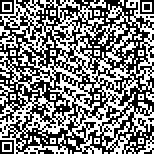宋鹏飞,马明,蔡倩,杨玺,徐亮,刘进,何逸康,张云.重复性外周磁刺激联合运动疗法对脑卒中患者踝跖屈肌痉挛的影响[J].中华物理医学与康复杂志,2017,39(11):823-826
扫码阅读全文

|
| 重复性外周磁刺激联合运动疗法对脑卒中患者踝跖屈肌痉挛的影响 |
| Repeated magnetic stimulation improves the effectiveness of exercise therapy in relieving ankle spasticity after stroke |
| |
| DOI: |
| 中文关键词: 磁刺激 运动疗法 脑卒中 痉挛 表面肌电图 |
| 英文关键词: Magnetic stimulation Exercise therapy Stroke Spasticity Surface electromyography |
| 基金项目:江苏省卫生和计划生育委员会科研课题资助项目(MS201509);南京市体育局课题(NJTY2015-501) |
|
| 摘要点击次数: 5950 |
| 全文下载次数: 7450 |
| 中文摘要: |
| 目的 观察重复性外周磁刺激联合运动疗法对脑卒中患者踝跖屈肌痉挛的影响。 方法 选取脑卒中患者60例,按随机数字表法分为治疗组和对照组,每组30例,2组患者均行常规运动疗法,治疗组在此基础上辅以重复性外周磁刺激疗法。分别于治疗前及治疗4周后(治疗后),采用表面肌电图记录踝关节背伸最大等长收缩时胫前肌及腓肠肌的积分肌电值(IEMG),计算协同收缩率(CO);采用Fugl-Meyer下肢运动功能评分(FMA-LE)、Holden功能性步行分级(FAC)和综合痉挛量表(CSS)分别评定2组患者的下肢运动功能、步行功能以及踝跖屈肌张力。 结果 治疗后,2组患者踝背伸最大等长收缩时的胫前肌积分肌电值(IEMG)[治疗组(52.25±6.97)μV·s、对照组(47.01±9.02)μV·s]、FMA-LE评分[治疗组(20.13±6.20)分、对照组(16.07±5.10)分]及FAC分级[治疗组(2.53±0.90)分、对照组(2.03±0.81)分]均较组内治疗前明显提高(P<0.05);2组患者的综合痉挛评分(CSS)[治疗组(8.90±1.81)分、对照组(9.83±1.49)分]及踝背伸协同收缩率(CO)[治疗组(33.50±4.95)%、对照组(39.93±4.58)%]均较组内治疗前明显降低(P<0.05);组间比较,治疗组治疗后的上述指标改善较对照组更为明显,组间差异均有统计学意义(P<0.05)。 结论 重复性外周磁刺激联合运动疗法可以更有效的减轻脑卒中患者踝跖屈肌痉挛,同时提高下肢的运动功能和步行能力。 |
| 英文摘要: |
| Objective To study the effect of repetitive peripheral magnetic stimulation combined with exercise on spasticity in the ankle plantar flexors among stroke survivors. Methods Sixty stroke survivors with spasticity in their ankle plantar flexors were randomly divided into a treatment group and a control group, each of 30. Both groups were given conventional kinesitherapy, while the treatment group were additionally provided with repetitive peripheral magnetic stimulation for 4 weeks. The myoelectric activity of the agonist and antagonist muscles was recorded using surface electromyography during maximum isometric voluntary contractions of the ankle dorsiflexors and co-contraction ratios (CRs) were calculated. The motor function, walking ability and ankle plantar flexor spasticity were evaluated using the Fugl-Meyer lower extremity assessment (FMA-LE), functional ambulation categories (FACs) and a composite spasticity scale (CSS). Results Before the intervention there was no signification difference between the two groups in terms of any of the assessments. After 4 weeks of treatment, the average integrated EMG of the anterior tibialis in the treatment group was significantly better than in the control group. That group′s average FMA-LE and FAC scores were also significantly better. The experimental group′s average spasticity score and co-contraction ratio during maximum isometric voluntary contractions of the ankle dorsiflexors had both decreased significantly. All of the improvements in the treatment group were significantly better than those in the control group. Conclusion Repetitive peripheral magnetic stimulation combined with the exercise therapy can effectively reduce ankle plantar flexior spasticity while improving motor function and walking ability. It is more effective than exercise alone. |
|
查看全文
查看/发表评论 下载PDF阅读器 |
| 关闭 |